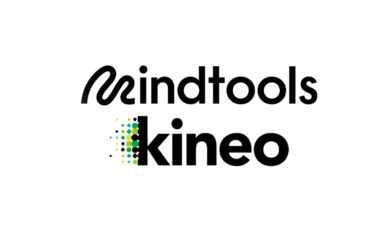Lockdown. Does the word fill you with dread? Maybe even nostalgia? In March 2020, much of the world shut down. Offices and workplaces closed their doors. Socializing without a screen was banned. Life as we knew it was paused. It almost felt like the world stopped spinning.
While we’re certainly not out of the Covid woods yet, most societies have lifted the more stringent lockdown rules. But the workplace cultural sea change precipitated by the pandemic will be felt far into the future, especially by office-based workers.
A Brave New World
On Monday 16 March 2020, every Mind Tools employee received the same email. “All employees, group-wide and globally, are required to work remotely on Tuesday 17 March 2020.” If all went smoothly, the company would be officially fully remote by the Wednesday.
I remember where I was sitting when I got the email. I felt like an extra in a science-fiction movie I didn’t want to be in. Like many organizations, Mind Tools took the initiative and shut its offices before a mandated lockdown. The initial plan outlined in the email was that we’d go remote for a period of four weeks. I remember thinking, “Four weeks without going into the office?! That’s crazy!” How little I knew.
At the height of the pandemic, “shop floor” workers – from surgeons to construction workers – were on the front line, and going to work was an act of bravery. Us office-based workers had it easier, for sure, but we were also thrown into one of the biggest work experiments in world history. Entire workforces became remote practically overnight. And over the next few years, a plethora of new terms entered our work-life lexicon – notably flexible, remote, and hybrid working.

Work Remotely? No Problem
As a Mind Tools editor, I already worked from home twice a week pre-pandemic. But other teams in the company weren’t allowed. We had this arrangement for legacy reasons but it was considered precious within the content team and was fiercely protected.
I remember the rationale for why other teams couldn’t do the same: it was things like “Finance needs access to their paperwork,” and, “Sales needs to be able to make calls.” When we were all forced to work from home, those arguments were blown out of the water. And like many companies, we found the move to fully remote went surprisingly well.
The Remote Revolution
Within a few weeks, the pandemic had flattened the barriers to a whole new way of working – and, not only did organizations survive the transition, in many cases things improved.
In 2020, office workers appeared largely happy with the new arrangement, and headline after headline declared that productivity seemed to be increasing with remote work. Research by CIPD in late 2020 found that two-thirds of employers believed the workforce was as productive or even more so than when in the workplace.
There were predictions that workers might never return to the office. Household names like Fujitsu and Twitter talked of a permanent change, the latter saying employees could work from home “forever.” Even Mark Zuckerberg said he was “happier and more productive” working from home.
2021 was much the same. Despite optimism that lockdowns were over, job advertisements with “homeworking” in the title increased threefold in the U.K. from the start of 2020 to May 2021.
The Hidden Costs of Working From Home
But there were downsides, too. As remote working stretched on, many believed that younger people were being left behind, missing out on “the largest career-learning cycle” of their lives, in the words of AOL’s former CEO.

It was also reported that working from home exacerbated gender inequalities, with women working more hours and bearing the brunt of household chores and childcare. Oxfam calculated that Covid cost women $800 billion in lost income in 2020.
In the early days of the pandemic, remote work was hailed as our utopian future, but by 2022 there was growing concern about the negative impact on mental health from working in isolation.
This is a paradox many have tried to square – reports of improved mental wellbeing from working remotely, coupled with a concurrent rise in mental health crises. The jury is still out on the wellbeing benefits of remote work.
Was There Really a Great Resignation?
But people still embraced remote and hybrid working. Despite the burgeoning backlash, the ongoing experiment in off-site working had shattered the status quo.
Office workers had discovered a new way of life; a new relationship with work seemed possible. You don’t need to endure the harrowing commute, you can pick your kids up from school, you can have lunch with your loved ones, and you can still get your work done.
In 2021, this change in our relationship with work went further still. Headlines began to proliferate predicting something of a work apocalypse. Dubbed “The Great Resignation,” there was concern that millions of people were poised to quit their jobs. And they did – in 2021, record numbers of Americans handed in their notice. And 2022 demolished that record again, with 50.5 million resignations.
It’s a trend that’s still unfolding, and there are a lot of unanswered questions. Some consider it more of a “great reshuffle,” as pent-up resignations from 2020 are cashed in and workers look for better conditions elsewhere. But in the U.K. at least, there are over half a million fewer workers in the workforce than before the pandemic hit. A government inquiry has been established to investigate why.

Are people just changing jobs? Are people retiring early? Have people’s priorities changed? Have the mental health impacts of the pandemic and lockdown inhibited people’s ability to work?
The answers aren’t clear and the causes are likely to be complex – but the impact is real and poses difficult questions to organizations and policymakers.
Is This the End of Remote Work?
So where are we in 2023? While many people – including staff here at Mind Tools – continue to work largely remotely, there are signs that organizations and leaders are starting to question remote working.
A LinkedIn analysis of its job vacancy postings found that the peak of jobs advertised in the U.S. as “remote” was March 2022. Since then, the general trend has been downward. Well, until January and February 2023, that is – for some reason, there’s been a surprising uptick in vacancies offering “remote” this year. Time will tell if it’s a blip or a resurgence.
Despite the overall trend moving away from remote work, some governments are embedding this new pandemic work culture in law. The U.K. is currently pushing through several private members’ bills related to work, specifically targeting lower-paid employees, including making it a right for British workers to request flexible working from day one of employment – be it compressed hours, or remote or hybrid work arrangements.
Leaders Are Trying to Resurrect the Office
Perhaps, then, hybrid and flexible working arrangements are the way forward – popping into the office a few times a week, or taking a long lunch break to go for a run. What could be better?
Well, when it comes to hybrid work in 2023, battle lines are being drawn between employees and companies, particularly at large corporations (presumably with expensive, impressive offices they want filling). Amazon recently announced that by spring of this year, office workers are expected back at least three days a week. But employees have fought back with a petition demanding a change to the new policy, and 14,000 members of staff joined a Slack channel advocating for remote.

Disney has one-upped Amazon and made four days a week in the office mandatory. Again, employees have launched a petition criticizing the policy. Apple and Starbucks are making similar noises, too.
Tony Danker, director-general of CBI, recently said on a radio show, “You ask most bosses, everybody secretly wants everyone to come back into the office.” It seems corporate leaders are increasingly turning against the remote revolution.
But employees have made it clear – remote working (in some form) is what they want. We’ll have to see how this fight shapes up the rest of the year. Popcorn at the ready.
What Does the Future Hold?
For my part, working life is unrecognizable from the start of 2020. Back then, I spent three days a week in Mind Tools’ South of England office, a gorgeous converted barn nestled in a Sussex nature reserve.
We said goodbye to that office last month and these days I work how I want: I’ve got my home set-up, sometimes I go to a café, sometimes a coworking space. I can work early or late, from wherever I like.
In many ways, I think I’m still recovering from the shock of the pandemic, in ways I probably don’t even realize. Similarly, the way we approach work has not yet settled since the upheaval of 2020 – a new status quo is still forming.
The last few years have unquestionably changed the fundamental contract between worker and employer, at least for office-based work. Where we go from here remains to be seen.
Mind Tool Resources
Here are some resources from Mind Tools that you might like to explore (to see all of them you’ll need to be a Mind Tools Club member):
Reconnecting After Covid
Health and Hygiene at Work
Managing a Geographically Dispersed Team
Managing Virtual Teams
Working in a Virtual Team
Virtual Onboarding
Virtually Perfect Meetings Video

About the Author:
Matthew has 10 years of experience writing, editing and commissioning online content. As a content editor, he’s worked in several industries – including charity, culture and travel – before finding his calling in L&D at Mind Tools, where he creates accessible, timely and engaging content for learners, across resource types.




